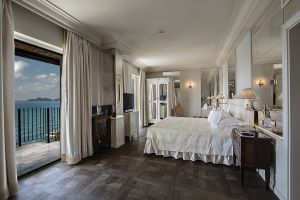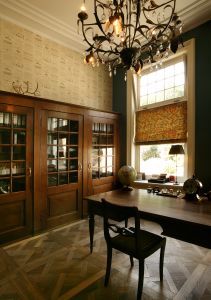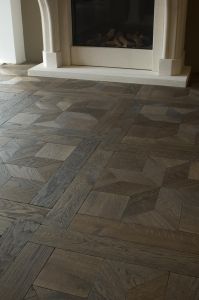Parquet (from the French “a small compartment”) is a geometric mosaic of wood pieces used for decorative effect in flooring. Parquet patterns are often entirely geometrical and angular—squares, triangles, lozenges—but may contain curves.
The term parquet (pronounced par-KAY) comes from a longstanding convention, which was to place wooden planks under thrones and other seats of honor, in order to visually demarcate the area from the rest of the room and to elevate it, literally and symbolically, above the floor.
This decorative floor area was known as the parc or parquet (meaning “little park”), and must evolved toward increasing decoration and inlaid patterning. By the Baroque era, parquet referred to both the technique and the genre of wooden floors inlaid in regular geometrical patterns.
Parquet floors were still something of a novelty in the 1620s, when Queen Marie de Medici of France installed an elaborate parquetry floor in the Luxembourg Palace — this flooring technique was considered to be, like Marie herself, of Italian origin. Through the next few decades, parquetry floors became THE fashionable flooring in fancy Parisian homes and by the time English Queen Henrietta Maria (Marie de Medici’s daughter) installed parquet floors at Somerset House in 1661, after returning from exile in Paris, the technique had become accepted as French style.
Please contact our talented team to inquire how Simply Oak™ can inspire you on your next project.




